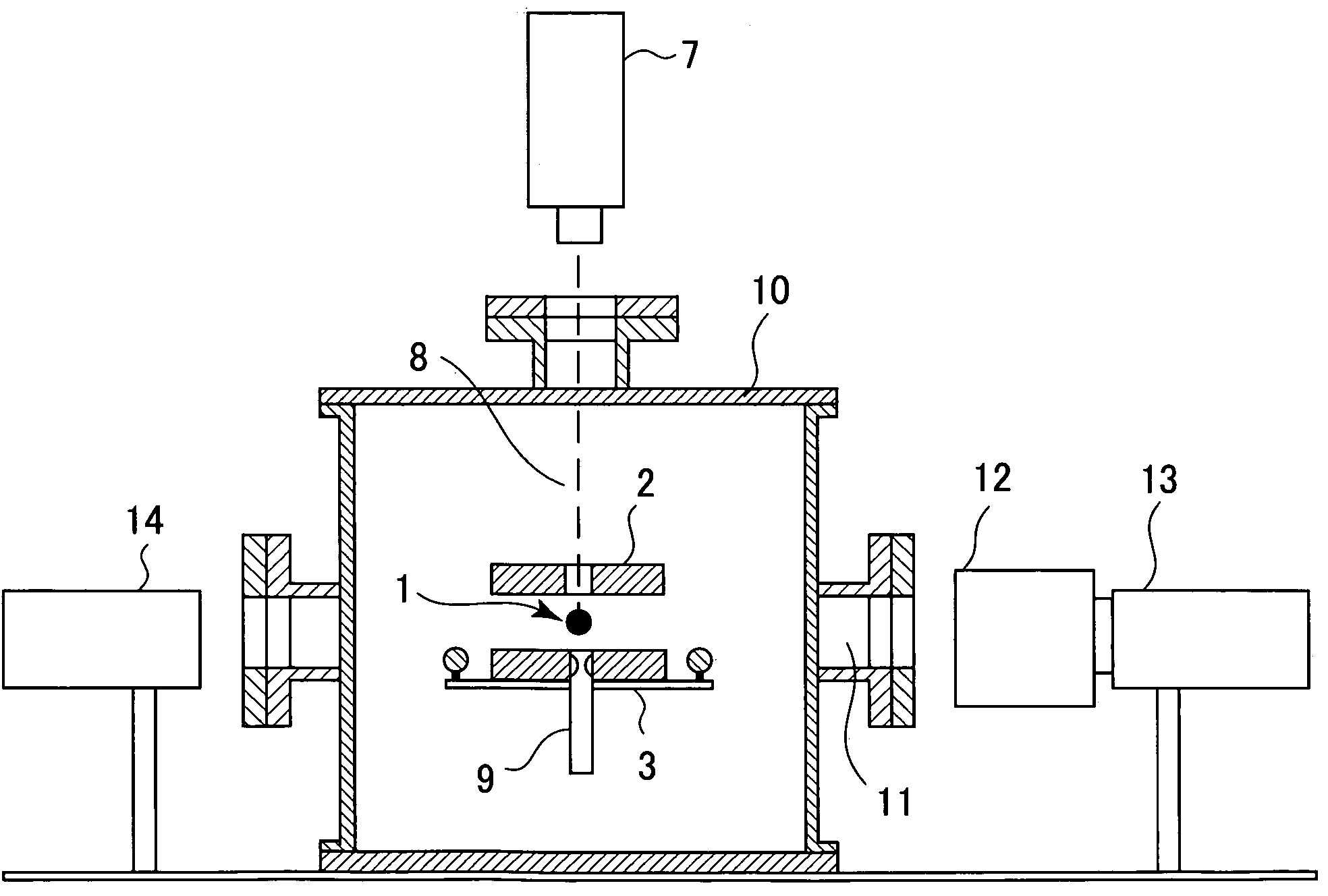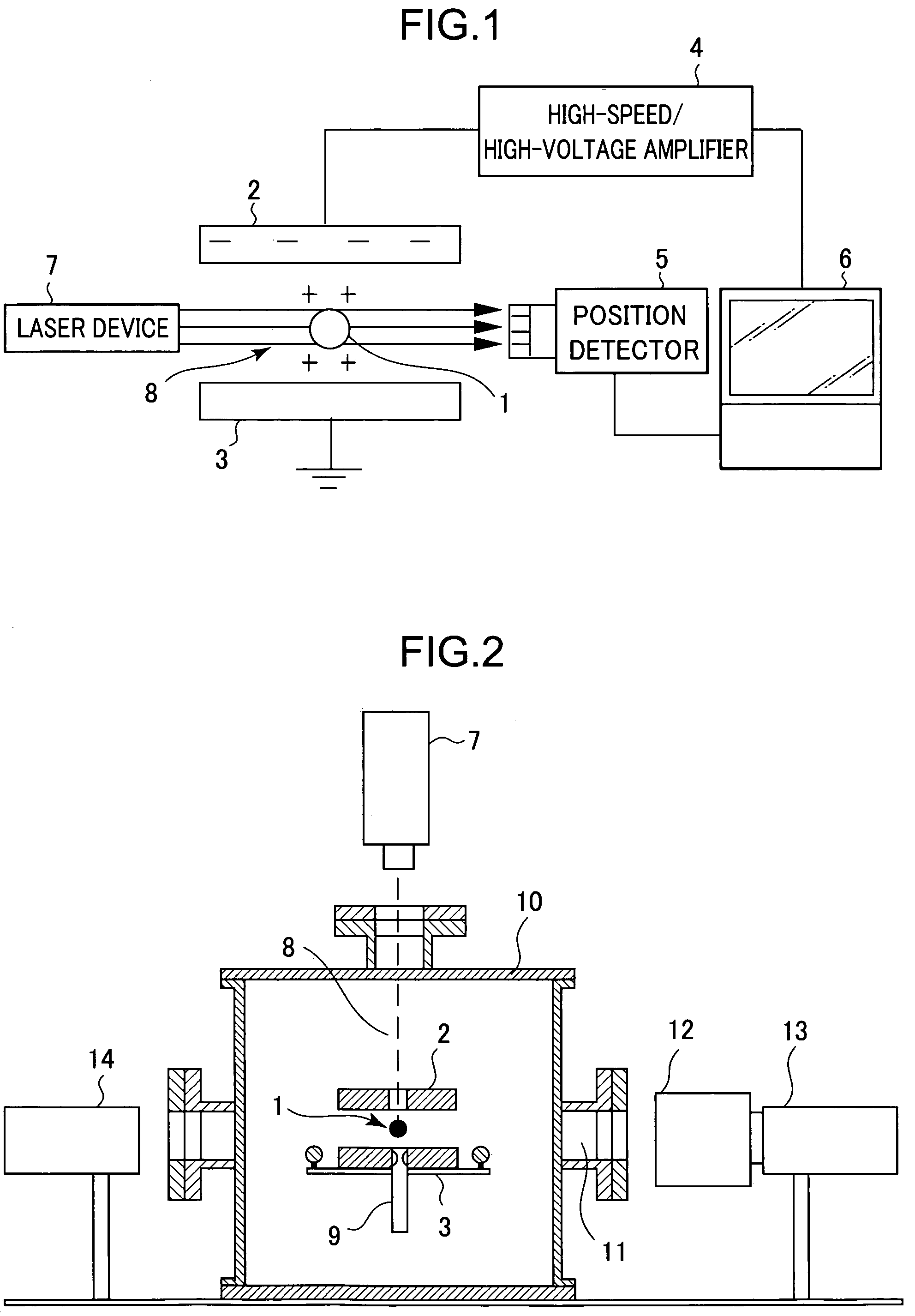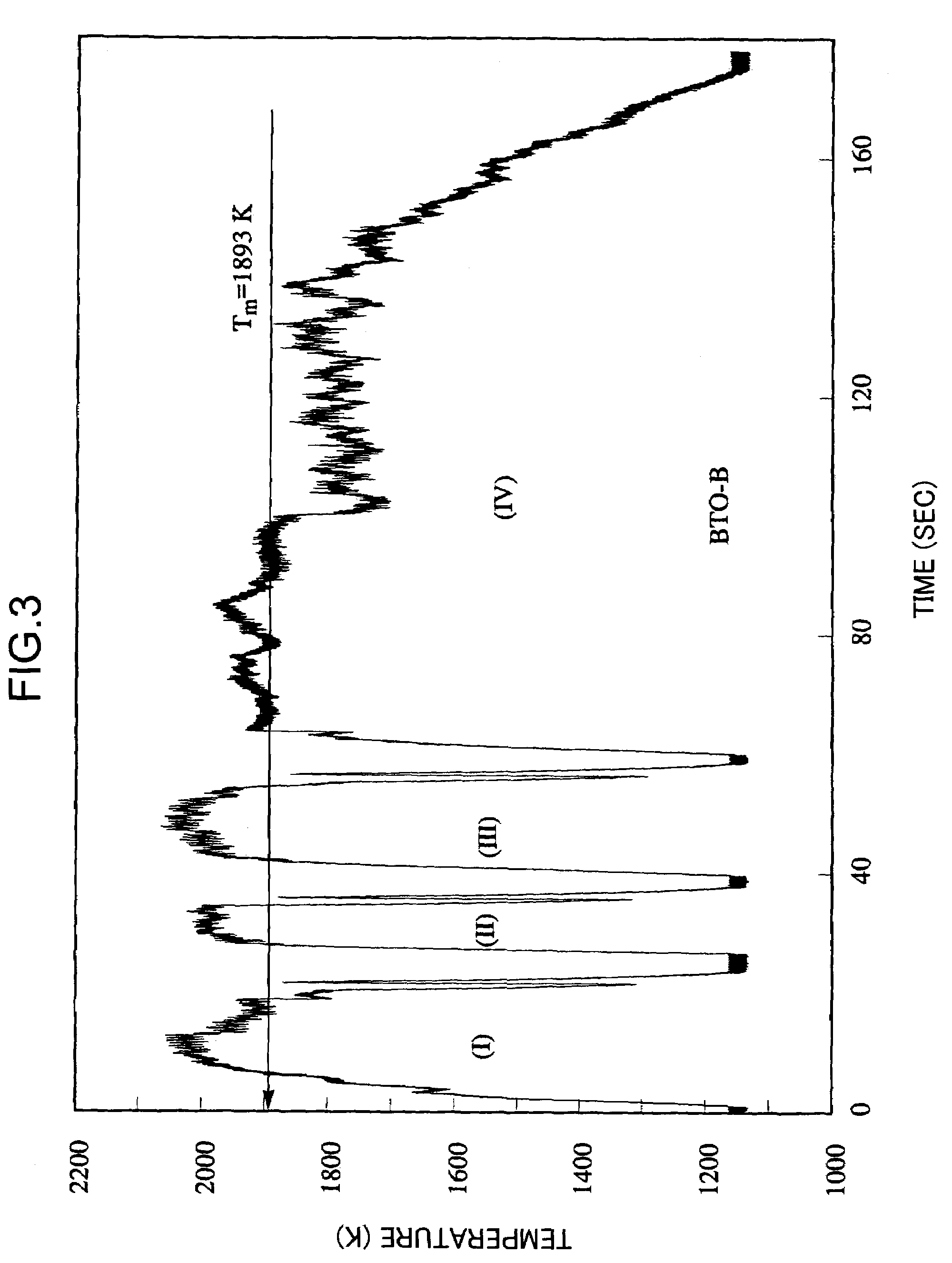Method for producing barium titanium oxide single-crystal piece using containerless processing
a technology of barium titanium oxide and single crystal, which is applied in the direction of crystal growth process, polycrystalline material growth, gel state, etc., can solve the problem of deteriorating product characteristics, affecting the quality of the product, so as to achieve the effect of large relative permittivity and new electrical characteristics
- Summary
- Abstract
- Description
- Claims
- Application Information
AI Technical Summary
Benefits of technology
Problems solved by technology
Method used
Image
Examples
example 1
[0035]A commercially available BaTiO3 power (99.9%; available from Rare Metallic Co.) was packed in a Penrose drain to form a rod-shaped sample having a diameter of about 3 mm and a length of about 100 mm using an isostatic pressing process, and the sample was sintered at 1573 K for 1 hour. The sintered sample was cut into a cubic-shaped sample having a weight of about 20 mg, and the cubic-shaped sample was formed into a spherical-shaped sample having a diameter of about 2 mm by use of a gas levitation furnace.
[0036]In Example 1, the spherical-shaped sample having a composition of BaTiO3 and a weight of about 20 mg (BTO-B) was subjected to the following melting and solidification process in the electrostatic levitation furnace. FIG. 3 shows the cooling curve of sample BTO-B. The sample was levitated in 4.5 atm of air atmosphere, and cooled rapidly from a temperature of about 2050 K greater than the melting point of the sample by about 150 K at a cooling rate of about 700 K / s it was ...
example 2
[0037]A spherical-shaped sample was prepared through the same process using the same apparatus as those in Example 1. In Example 2, the spherical-shaped sample having a composition of BaTiO3 and a weight of about 20 mg (BTO-C) was subjected to the following melting and solidification process in the electrostatic levitation furnace.
[0038]FIG. 6 shows the cooling curve of sample BTO-C. The sample was levitated in 4.5 atm of air atmosphere, and cooled rapidly from a temperature of about 2050 K greater than the melting point of the sample by about 150 K at a cooling rate of about 700 K / s it was repeatedly performed 3 times. Then, the re-molten sample was maintained at a temperature just below the melting point of the sample for a given time, and then rapidly cooled at a cooling rate of 300 K / sec. FIG. 7 shows an optical microscopic photograph of an obtained solidified body of the sample in Example 2. As seen in the optical microscopic photograph, the solidified sample is a transparent b...
PUM
| Property | Measurement | Unit |
|---|---|---|
| melting point | aaaaa | aaaaa |
| melting point | aaaaa | aaaaa |
| temperature | aaaaa | aaaaa |
Abstract
Description
Claims
Application Information
 Login to View More
Login to View More - R&D
- Intellectual Property
- Life Sciences
- Materials
- Tech Scout
- Unparalleled Data Quality
- Higher Quality Content
- 60% Fewer Hallucinations
Browse by: Latest US Patents, China's latest patents, Technical Efficacy Thesaurus, Application Domain, Technology Topic, Popular Technical Reports.
© 2025 PatSnap. All rights reserved.Legal|Privacy policy|Modern Slavery Act Transparency Statement|Sitemap|About US| Contact US: help@patsnap.com



